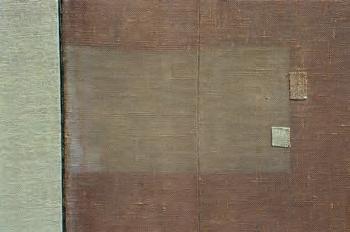
4 minute read
Tacita Dean
Tacita Dean
Darmstädter Werkblock , 2007
Advertisement
La obra Darmstädter Werkblock de Tacita Dean documenta los últimos momentos del Block Beuys, un agregado de obras de Joseph Beuys depositadas por el coleccionista de Darmstadt Karl Ströher en el Hessisches Landesmuseum. Éste compró todas las obras de una exposición del artista en 1967, además de las que tenía en ese momento en su estudio y a las que unió otras compras obtenidas gracias a los derechos de adquisición preferente que le había concedido Beuys. La colección fue creciendo hasta 1977, año de la muerte de Ströher, y entre 1970 y 1986 el propio Beuys se encargó de disponer las piezas en las vitrinas y en el espacio, expandiendo los límites entre la instalación y la colección permanente. El depósito fue adquirido por el museo en 1989. El conjunto se compone de 290 obras datadas entre 1949 y 1972 y se expande a lo largo de siete galerías. Una de las particularidades del Block Beuys es que se haya ubicado en un museo histórico de vocación enciclopédica. Su origen se remonta a finales del s. XVIII, cuando la Landgravine Karoline dona a su hijo el Gran Duque Ludewig I su colección de curiosidades naturales e instrumentos científicos. Éste la amplió con otras colecciones de historia natural y cultural y obras de arte, abriéndose al público en 1820. A finales de ese siglo el arquitecto
Tacita Dean’s Darmstädter Werkblock documents the final moments of Block Beuys, a suite of works by Joseph Beuys entrusted to the Hessisches Landesmuseum by Karl Ströher, a Darmstadt collector. Ströher acquired the pieces at a Beuys exhibition in 1967, along with all the works in his studio at the time, and later purchased more thanks to the right of first refusal that Beuys had granted him for future production. The collection continued to grow until Ströher’s death in 1977, and between 1970 and 1986 Beuys personally mounted the pieces in vitrines and throughout the exhibition space, pushing the boundaries between his installation and the permanent collection. The group, acquired by the museum in 1989, consists of 290 works made between 1949 and 1972 and occupies a total of seven galleries. One of the most striking characteristics of Block Beuys is the fact that it is housed in an encyclopaedic museum. The Landesmuseum began to take shape in the late 18th century when Landgravine Karoline bequeathed her collection of natural curiosities and scientific instruments to her son, Grand Duke Ludwig I. He enlarged it with other natural and cultural history collections and works of art, and in 1820 it was opened to the public. At the end of that century
Alfred Messel diseñó un edificio de nueva planta para las tres series de colecciones, zoología, geología y galería de pinturas, que se ubicaban en espacios diferenciados, actuando como museos independientes.
Destruido gravemente durante la Segunda Guerra Mundial, el museo volvió a abrir sus puertas parcialmente en 1955. 12 años después se abrió el Block Beuys. En 2007 el museo decidió acometer una renovación completa del edificio reconstruido para mejorar las condiciones de conservación y para recomponer en lo posible la arquitectura original de Messel. Esto conllevaba la reforma del Block Beuys y con ello la alteración del ambiente en el que éste había trabajado. La renovación implicaba, entre otros cambios, sustituir las viejas telas de yute que cubrían las paredes de las galerías donde antes habían estado las piezas medievales y que conferían al espacio una atmósfera característica. El hecho de que Beuys nunca hubiera hecho mención a las paredes favorecía la sustitución de telas y moquetas por un neutro cubo blanco. Aunque la decisión creó una cierta controversia entre la comunidad artística, su reemplazo fue inevitable. Tacita Dean no pudo filmar el contenido del Block Beuys por los derechos de autor y decidió registrar la configuración particular que el paso del tiempo había dado a las paredes, con sus manchas, agujeros, parches y rasguños, así como otros detalles significativos de las salas, meses antes de su definitiva desaparición.
Alfred Messel designed a new building to house the three main collections—zoology, geology and picture gallery—in separate spaces, functioning as independent museums.
Though severely damaged during World War II, the building partially reopened in 1955. Twelve years later, Block Beuys was presented to the public. In 2007 the rebuilt museum was completely renovated to improve conservation conditions and recover as much of Messel’s original architectural design as possible. This entailed an overhaul of the Block Beuys rooms, significantly modifying the setting in which the artist had worked. Among other changes, the remodel called for the replacement of the old jute wall coverings in the former medieval galleries, which lent the space a characteristic ambiance. The fact that Beuys never mentioned the walls was cited as an argument in favour of removing the worn fabrics and carpets to create a neutral white cube. Although the decision sparked controversy in the art world, change was inevitable. For copyright reasons, Tacita Dean was not able to film the contents of Block Beuys, so she decided to capture the identifying features that the walls had acquired over the years—stains, holes, patches and scratch marks—and other significant details of the galleries, months before this unique setting disappeared forever.












